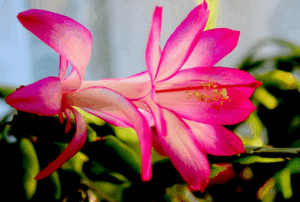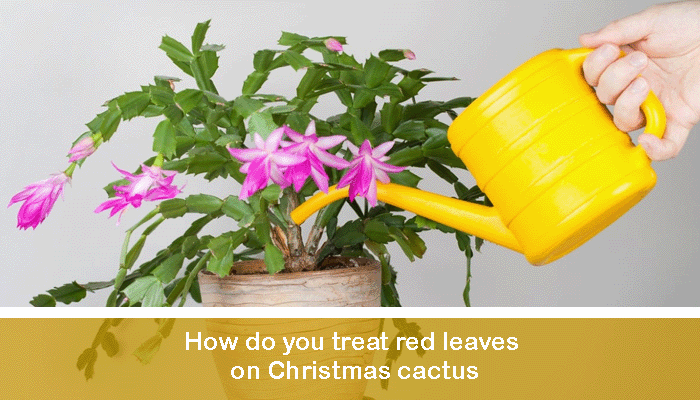How do you treat red leaves on Christmas cactus

Schlumbergera × buckleyi , also known as Christmas Cactus or True Christmas Cactus, thrives indoors and outdoors in USDA hardiness zones 10 to 12, with established ones often suffering few problems, but some may develop red-tinged foliage.
Cultural Stress
The Christmas Cactus, a tropical forest plant, often develops red foliage due to cultural stress or inadequate water. It thrives in partial shade during warm seasons but prefers full sunlight during midwinter. To maintain its health, water the cactus when its soil feels dry. If the cactus appears healthy, adjust its light exposure and soil moisture level, ensuring it doesn’t dry out too long between watering.
Root Infections
Overwatering in Christmas Cactus can cause root damage by limiting oxygen exposure and weakening tissue. Root rot, characterized by mushy tissue, wilting, and pink or reddish discolorations on leaves, is a common result. The plant should be repotted into fresh, unused soil and left un watered for 2 to 3 weeks. The damaged foliage should be pruned off, and the plant should be returned to a regular water schedule by allowing soil to dry out between watering.
To know the important points about hydration, read the article “When to stop watering Christmas cactus?“.

Pathogen Infestations
Christmas Cacti can develop an infestation of Cactus Cyst if they are potted in contaminated soil or propagated from an infected plant. This nematode primarily affects the roots but can cause symptoms in the foliage, including stunted growth, wilting, and reddish discolorations. The most noticeable sign is tiny, pearl-like masses on the roots. Treatment is difficult and rarely successful, so prevention is crucial. Place the plant in sterilized soil and keep it off the ground. If an infestation occurs, discard the plant.
Nutrient Deficiency
Magnesium deficiency symptoms in Christmas Cacti, such as red or purple-tinged foliage and wilting, are common during winter when feeding and watering are restricted and cold temperatures slow nutrient uptake. The cactus thrives at temperatures between 55-65°F. To correct magnesium deficiency, Epsom salts can be used as a supplemental feeding. A teaspoon of Epsom salts dissolved in water can be spritzed onto the foliage, and reapplied every two weeks until the foliage returns to its original color.
Read more articles on Christmas cactus:











